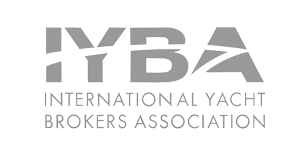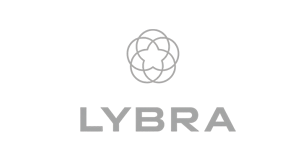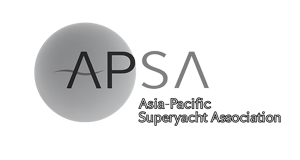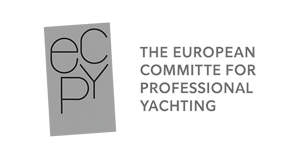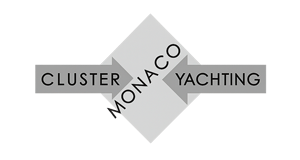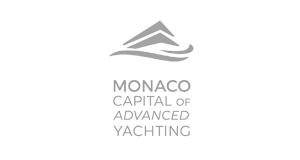In recent years, the inclusion of helipads on superyachts has become a symbol of luxury and sophistication, reflecting the evolving demands of high-net-worth individuals seeking the ultimate travel experience. This trend underscores the increasing popularity of superyachts with helipads as an integral feature in the world of luxury travel. The seamless integration of air and sea travel, coupled with the prestige and exclusivity associated with helipads, has established these yachts as opulent and convenient in the world of luxury travel. As technology and design continue to advance, helipads are likely to remain a coveted feature, catering to those who seek luxury and sophistication on the high seas.
Helipads on superyachts enable access to remote and secluded destinations that may be inaccessible by traditional means. This capability expands the horizons of luxury travel, offering owners and guests the opportunity to explore pristine locations far from the typical tourist routes, enhancing the sense of exclusivity and adventure.
For busy individuals with demanding schedules, time is a precious commodity. Helipads on superyachts facilitate swift and efficient travel, minimizing the time spent on transportation logistics. This time-saving aspect is particularly appealing to business moguls, celebrities, and high-profile individuals who value the ability to maximize their time in luxurious surroundings.
The inclusion of a helipad on a superyacht contributes to an enhanced guest experience. Whether it’s welcoming VIPs, business associates, or friends, the convenience of arriving directly on the yacht creates a lasting impression. It adds an element of grandeur to events hosted on the superyacht, making every moment memorable.
The Basics of Superyacht Helipads
A helipad on a superyacht is a specially designed area or platform that serves as a landing and takeoff point for helicopters. The purpose of incorporating a helipad into a superyacht is to provide a means of convenient and direct air access for the yacht’s owner, guests, or VIPs. This feature adds a significant level of flexibility and luxury to the yacht, allowing for seamless transitions between air and sea travel.
Helipads enable direct access to the superyacht, eliminating the need for guests to travel to and from airports or other landing facilities. This convenience is especially valuable for those with busy schedules who seek efficient and seamless travel experiences.
Helipads extend the range of destinations that a superyacht can reach, including remote or secluded areas that are inaccessible by traditional means. This feature enhances the yacht’s versatility, providing the opportunity for unique and exclusive travel experiences.
The inclusion of a helipad adds a prestigious and luxurious element to a superyacht, appealing to high-net-worth individuals who value exclusivity and opulence. It symbolizes the yacht owner’s commitment to providing an unparalleled level of comfort and convenience for themselves and their guests.
Different types of helipads: permanent vs. retractable
Some superyachts have permanent helipads that are integrated into the yacht’s structure and design. These helipads are typically situated on the upper deck and are a visible and constant feature of the yacht. They are constructed using materials which can withstand the weight and rotor wash of helicopters. They often feature non-slip surfaces and include lighting for nighttime operations.
Retractable helipads are designed to be concealed when not in use, preserving the aesthetics of the yacht. These helipads often use hydraulic systems to lower and raise the landing platform into a dedicated storage space beneath the deck. Retractable helipads offer greater versatility in terms of space utilization. When the helipad is retracted, the area can be used for other purposes, such as a sun deck or entertainment space.
Both permanent and retractable helipads contribute to the overall functionality and appeal of superyachts, providing owners and guests with an extraordinary level of convenience and luxury in their travel experiences.
Design and Construction Considerations
The design and construction of helipads on superyachts involve meticulous considerations to ensure safety, functionality, and seamless integration with the vessel’s overall aesthetics. Structural engineers collaborate closely with naval architects to address the unique challenges presented by the maritime environment. For permanent helipads, the design incorporates load-bearing elements capable of supporting the weight of helicopters, considering factors like rotor dynamics and potential vibrations. Non-slip materials, often resistant to saltwater corrosion, are chosen to enhance safety during landing and takeoff. Lighting systems are integrated for nighttime operations. In the case of retractable helipads, hydraulic systems are intricately engineered to facilitate smooth and controlled movements, allowing the platform to seamlessly transition between its stored position and the operational state. Attention is given to the yacht’s weight distribution, ensuring stability during helicopter operations. Overall, the design and construction of these helipads epitomize the marriage of engineering precision with aesthetic harmony, embodying pure luxury and functionality of superyacht amenities.
Compliance with aviation and maritime regulations is paramount when designing and constructing helipads on superyachts, as these structures involve the integration of both air and sea travel elements. The International Civil Aviation Organization (ICAO) and relevant national aviation authorities set stringent standards for helipad design and operation to ensure safety and adherence to international aviation regulations.
Helipad compliance involves meeting specific criteria related to dimensions, markings, lighting, and safety features to ensure the safe landing and takeoff of helicopters. They must also comply with maritime regulations dictated by classification societies and flag state authorities. These regulations address the structural integrity of the yacht, taking into account the additional load and stresses imposed by helicopter operations.
Compliance extends to the implementation of emergency response protocols, including firefighting equipment, heli-deck crash rescue facilities, and crew training. These measures are in place to address potential emergencies and ensure the safety of passengers, crew, and the vessel itself.
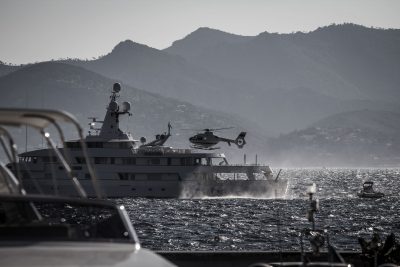 Size and Compatibility
Size and Compatibility
The operation of helipads on superyachts is subject to a comprehensive framework of maritime and aviation regulations to ensure safety and compliance. International Civil Aviation Organization (ICAO) standards dictate the design, construction, and operational criteria for helipads, emphasizing dimensions, markings, and safety features. National aviation authorities enforce these standards, with flag states and classification societies overseeing maritime aspects. Licensing and permits are crucial for operating a helipad at sea, involving approvals from both aviation and maritime authorities. Yacht owners must obtain helipad certification, demonstrating adherence to aviation standards, and ensure compliance with the yacht’s flag state regulations. Additionally, local permits may be required for each port of call, reflecting the yacht’s commitment to safety, environmental responsibility, and adherence to international and regional regulations governing the dynamic intersection of air and sea travel.
Safety Measures and Protocols
Safety measures for helipad operations on superyachts are paramount to mitigate risks associated with landing and take-off. Rigorous training for both crew and pilots is essential, covering proper communication protocols, emergency procedures, and the use of safety equipment. Emergency response plans include firefighting capabilities, crash rescue facilities, and medical assistance to address unforeseen incidents. Helipads are equipped with lighting systems for nighttime operations, and non-slip materials ensure secure footing during adverse weather conditions. Crew members are trained to handle various helicopter types, and regular drills prepare them for swift and coordinated responses to emergencies. Additionally, pilots undergo specific training to adapt to the unique challenges posed by maritime environments. These comprehensive safety measures underscore the commitment of superyacht owners and operators to prioritize the well-being of passengers, crew, and the integrity of the vessel during helicopter operations.
Operational Considerations
Operating a helipad at sea presents unique challenges which require careful consideration by superyacht owners and operators. The constantly changing maritime environment, including sea conditions and weather fluctuations, can impact helicopter operations. Maintenance and upkeep of the helipad demand regular inspections to ensure structural integrity, non-slip surfaces, and compliance with aviation regulations. Coordination with maritime and air traffic control is essential to facilitate seamless helicopter movements, especially in busy or restricted areas. Effective communication and collaboration with these authorities are crucial to obtain clearances, navigate airspace regulations, and enhance overall safety. Maintenance personnel must be well-trained to address any wear and tear, corrosion, or weather-related damage promptly. These challenges underscore the need for a proactive approach, emphasizing the importance of regular maintenance, effective communication, and a thorough understanding of the dynamic conditions inherent in operating a helipad at sea.
The Luxury and Convenience Factor
Superyachts with helipads represent luxurious travel, seamlessly integrating air and sea transportation for unparalleled convenience and exclusivity. The design and construction of these helipads involve meticulous considerations for safety, compliance with aviation and maritime regulations, and adherence to international standards. Standard helipads on superyachts, ranging from 10 to 18 meters in diameter, accommodate various luxury helicopters, with the size carefully determined based on the yacht’s design and available space. Compliance with licensing, permits, and regulations is essential for operating a helipad at sea, with a focus on safety measures, emergency procedures, and coordination with maritime and air traffic control. The challenges of operating a helipad at sea include addressing the dynamic maritime environment, ensuring maintenance and upkeep, and effective communication with regulatory authorities. Notable examples of superyachts with helipads, like the “Octopus,” highlight the prestige and desirability associated with these luxurious additions, emphasizing their significant impact on the overall value and allure of superyachts in the competitive luxury yacht market.

